Meditation Postures and Well-being
How Proper Sitting Enhances Your Practice:
Meditation is a powerful tool for enhancing mental clarity, reducing stress, and promoting overall well-being. However, the effectiveness of your meditation practice can be significantly influenced by your sitting posture. Proper sitting not only ensures comfort but also enhances the depth and quality of your meditation. In this article, we will explore the importance of meditation postures, the role of stretching before and after meditation, and how to deal with common issues such as numbness in the feet.
The Importance of Meditation Postures
The posture you adopt during meditation is crucial for several reasons. It helps maintain focus, supports steady and deep breathing, and minimizes physical discomfort that can disrupt your meditation. A good posture promotes a balanced flow of energy throughout the body, facilitating deeper states of mindfulness and relaxation.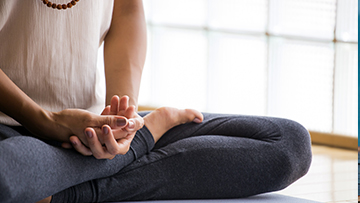
Stretching Before Meditation: A Must
Before you begin your meditation session, it is essential to engage in some gentle stretching. Stretching prepares your body for prolonged sitting by loosening tight muscles and improving circulation. This can help prevent stiffness and discomfort during meditation, allowing you to maintain your posture for longer periods.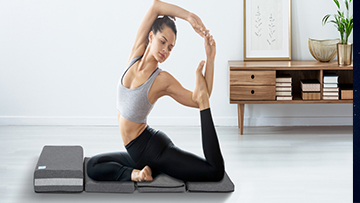
Benefits of Stretching Before Meditation:
- Improves Flexibility: Stretching increases the flexibility of your muscles and joints, making it easier to sit in various meditation postures.
- Enhances Circulation: Improved blood flow helps reduce the risk of numbness and tingling in the legs and feet.
- Reduces Tension: Stretching helps release physical tension, promoting a more relaxed and comfortable meditation experience.
Recommended Stretches:
- Cat-Cow Stretch: This yoga pose helps warm up the spine and improve flexibility.
- Forward Bend: This stretch targets the hamstrings and lower back, reducing stiffness.
- Hip Openers: Poses like the butterfly stretch or pigeon pose help loosen the hips, making seated positions more comfortable.
Dealing with Numbness in the Feet
Numbness in the feet is a common issue during meditation, especially when sitting cross-legged or in other seated postures for extended periods. Here are some tips to manage and prevent numbness:Adjust Your Position: Periodically shift your position to encourage blood flow. Even small adjustments can help.
Use Props: Cushions, bolsters, or meditation benches can provide support and reduce pressure on your legs and feet.
Stretching: Incorporate stretching before and after meditation to improve circulation and flexibility.
Alternate Postures: If a particular posture consistently causes numbness, try alternating with other positions, such as kneeling or sitting in a chair.
Mindful Movement: When you notice numbness, gently move your toes and feet to stimulate circulation without breaking your meditative state.
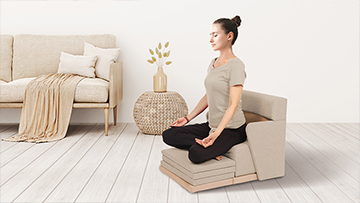
Stretching After Meditation: The Best Practice
Just as stretching before meditation is important, it is equally beneficial to stretch after your session. Stretching post-meditation helps your body transition out of the meditative state, releases any residual tension, and restores circulation to areas that may have become compressed during sitting.Benefits of Stretching After Meditation:
- Restores Blood Flow: Stretching helps restore circulation to your legs and feet, preventing stiffness and numbness.
- Relieves Tension: Post-meditation stretches can help release any tension that may have built up during your practice.
- Enhances Flexibility: Regular stretching after meditation can improve overall flexibility, making future meditation sessions more comfortable.
Recommended Post-Meditation Stretches:
- Gentle Twist: A seated or lying twist helps release tension in the spine and back muscles.
- Leg Stretches: Extend your legs and gently stretch them to improve circulation.
- Shoulder Rolls: Rolling your shoulders helps release tension in the neck and shoulders.
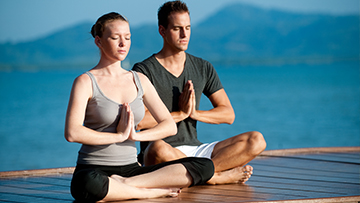
Proper sitting posture
Proper sitting posture is fundamental to enhancing your meditation practice and overall well-being. Incorporating stretching before and after meditation can significantly improve your comfort and prevent common issues like numbness in the feet. By paying attention to your body's needs and making necessary adjustments, you can create a more effective and enjoyable meditation experience.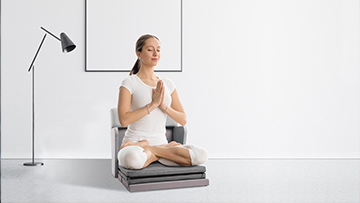
Remember, the goal of meditation is to achieve a state of inner peace and clarity. By ensuring your body is well-prepared and supported, you can focus more deeply on your practice and reap the full benefits of meditation. Happy meditating!